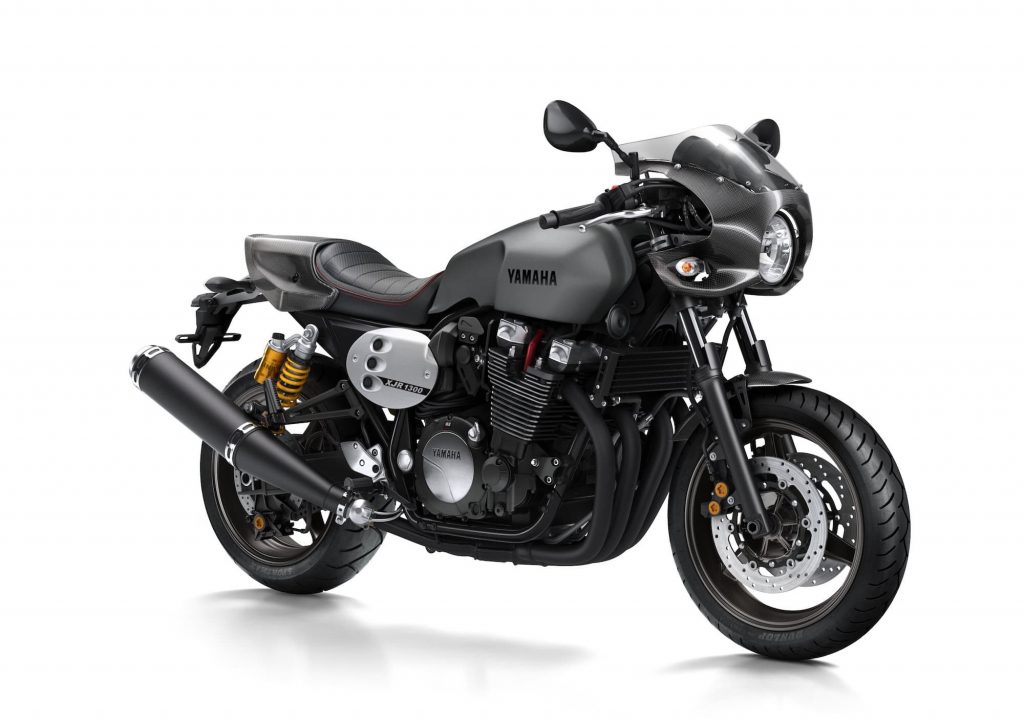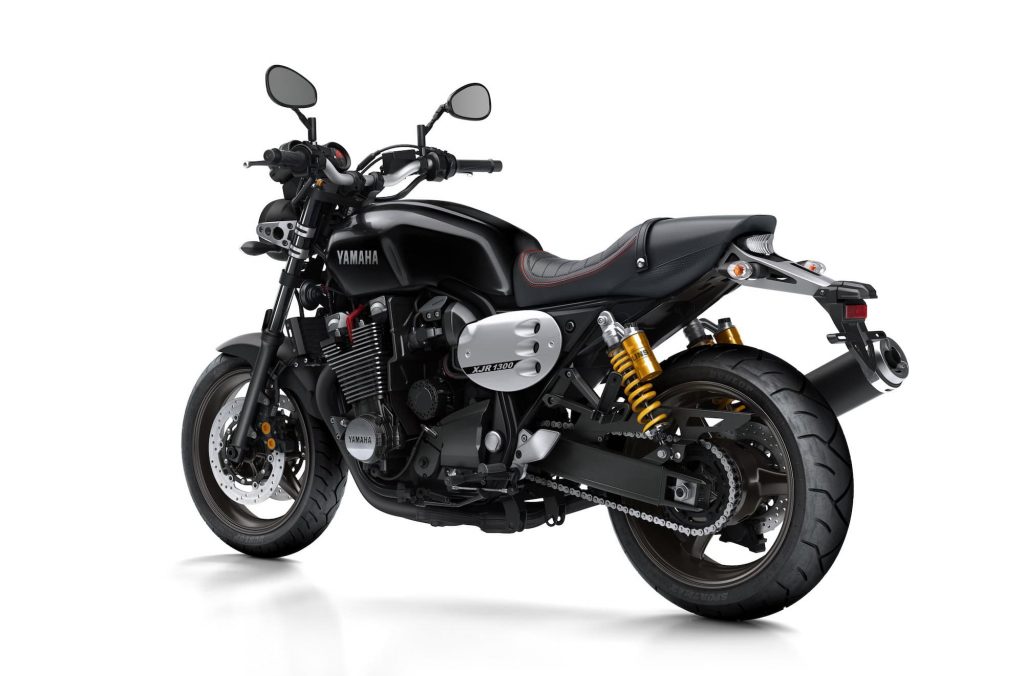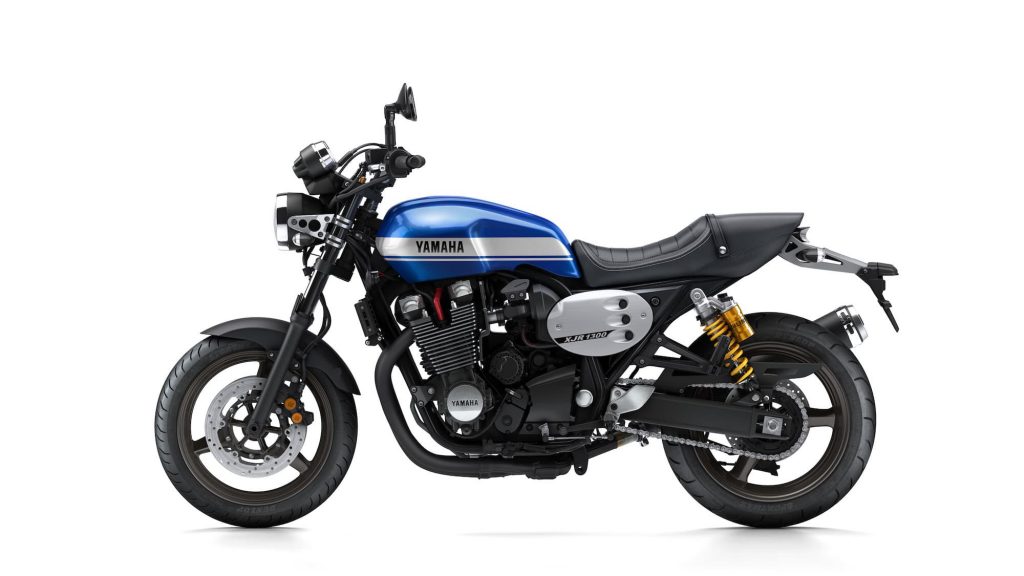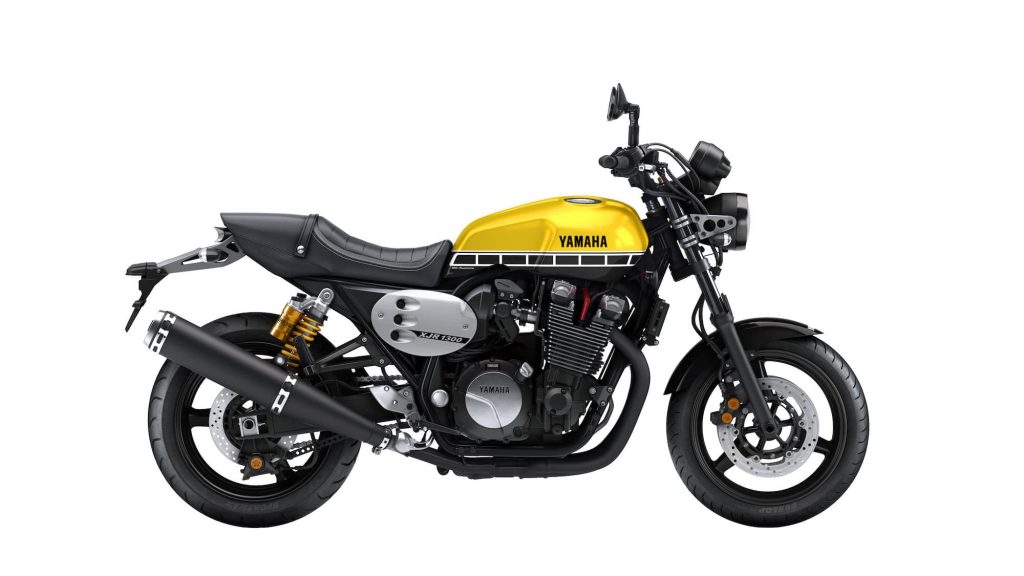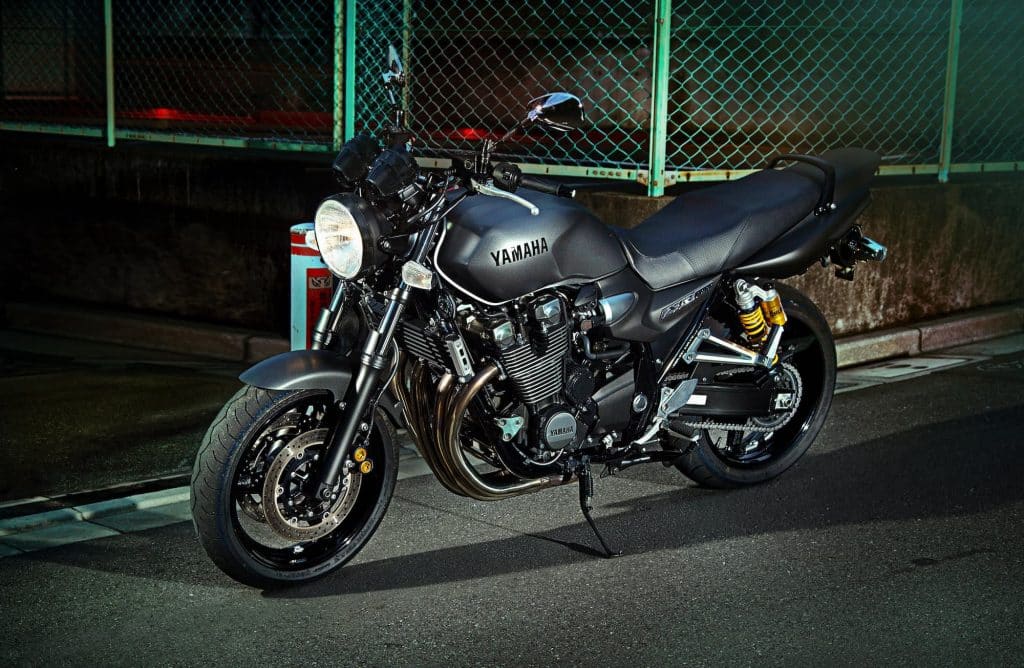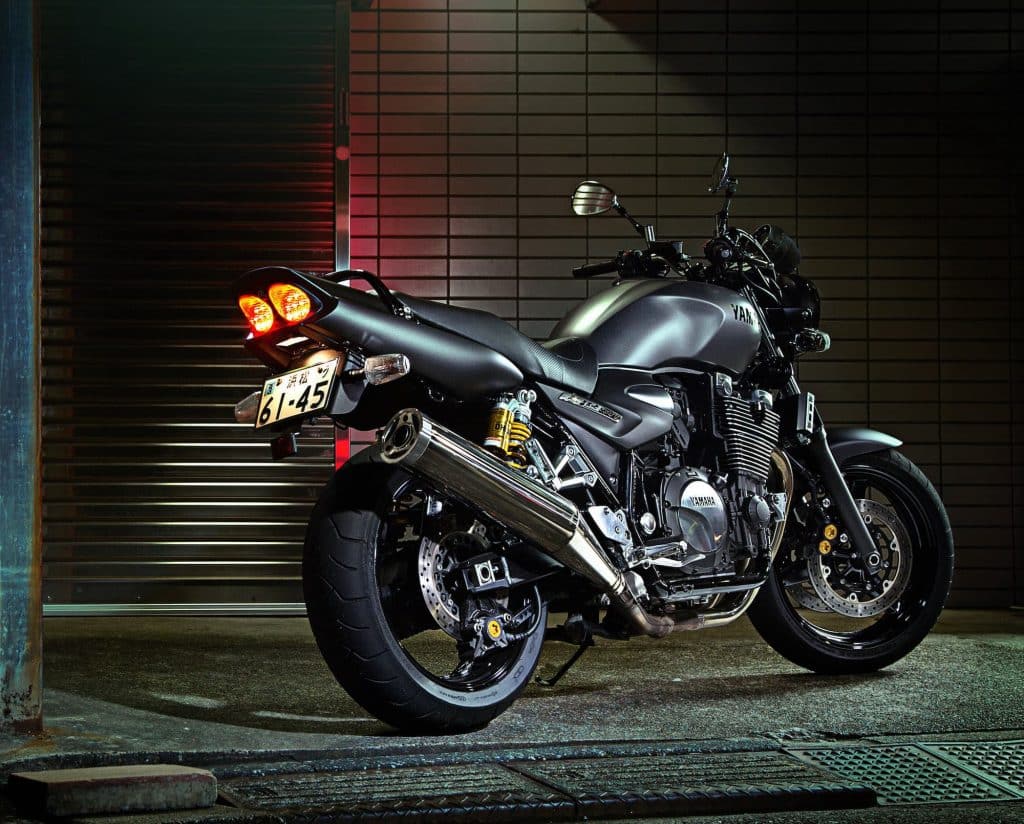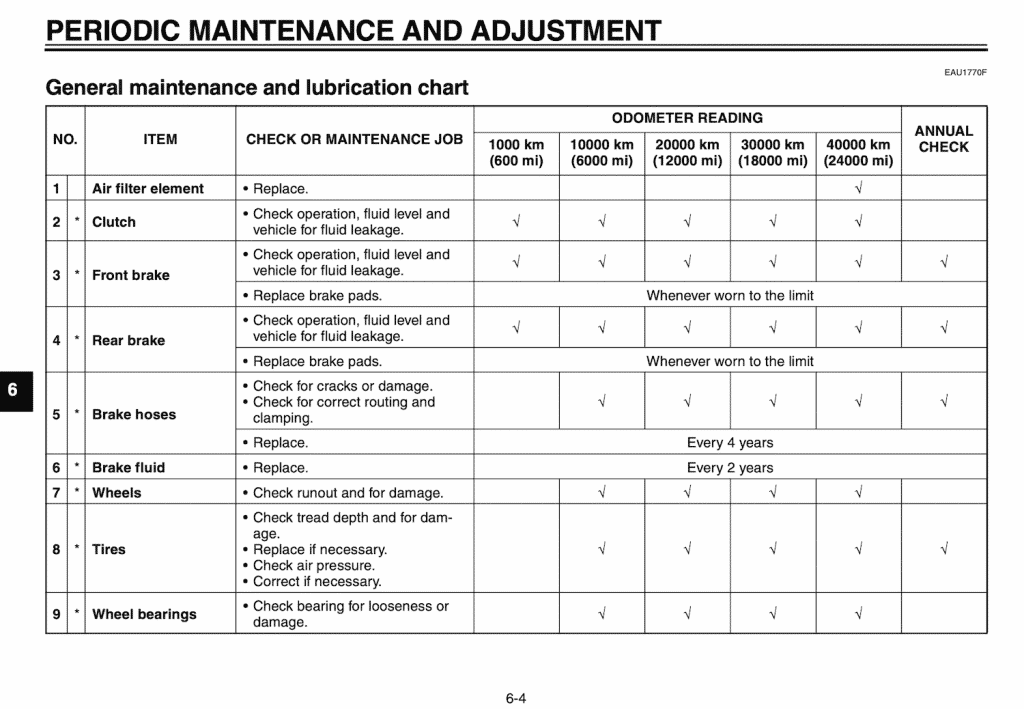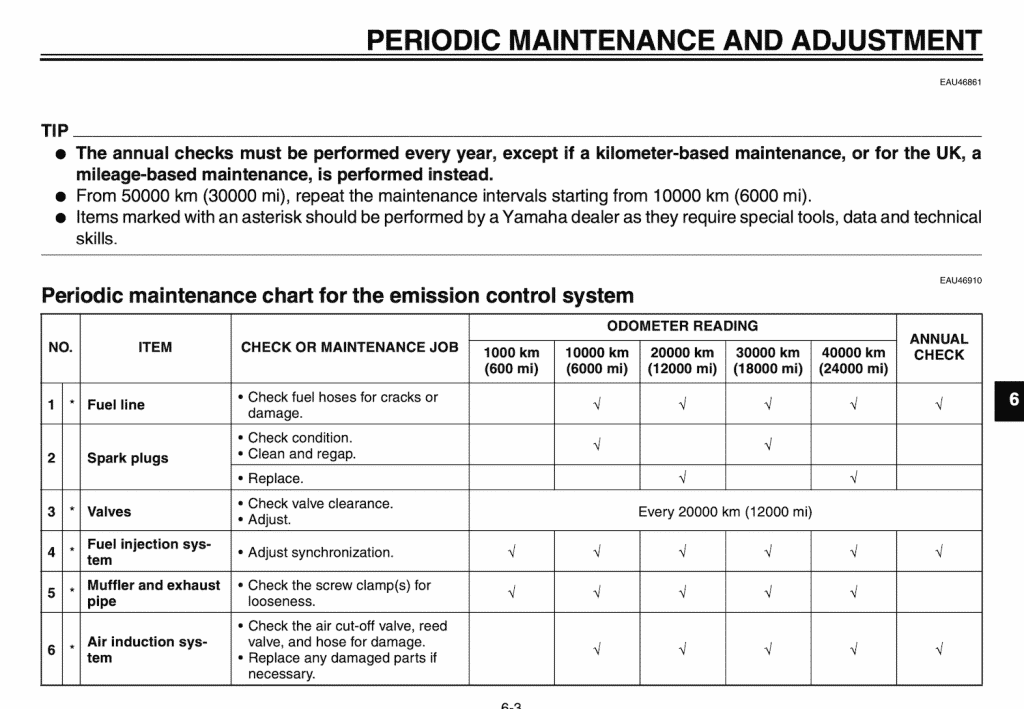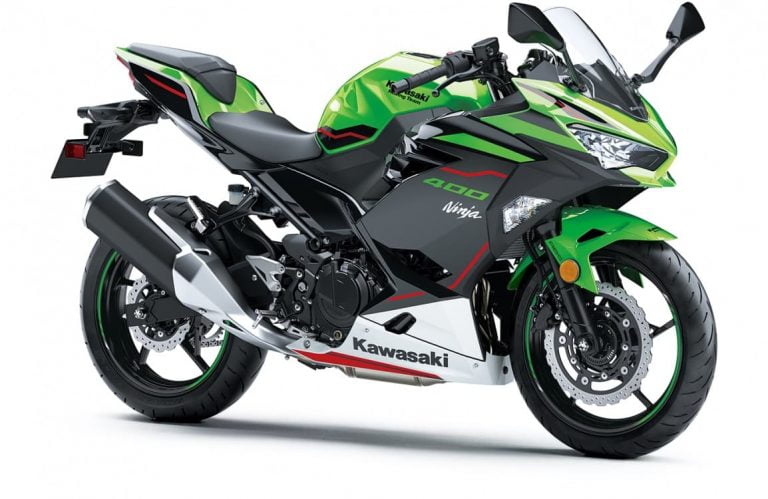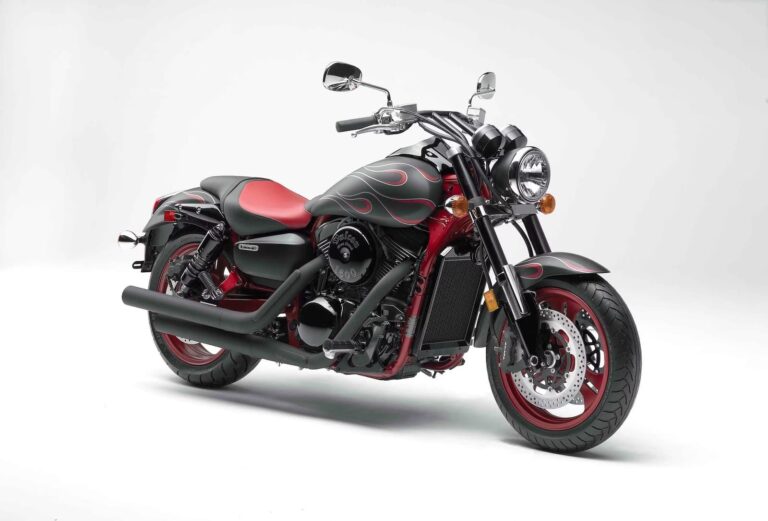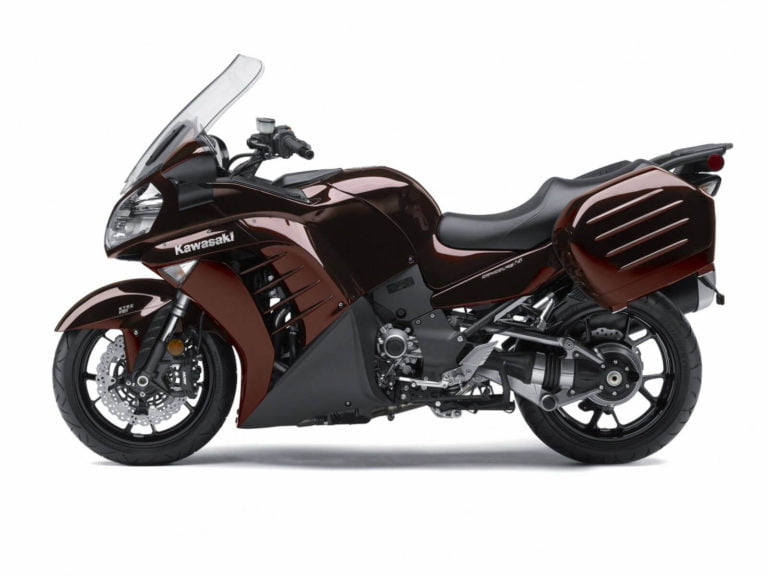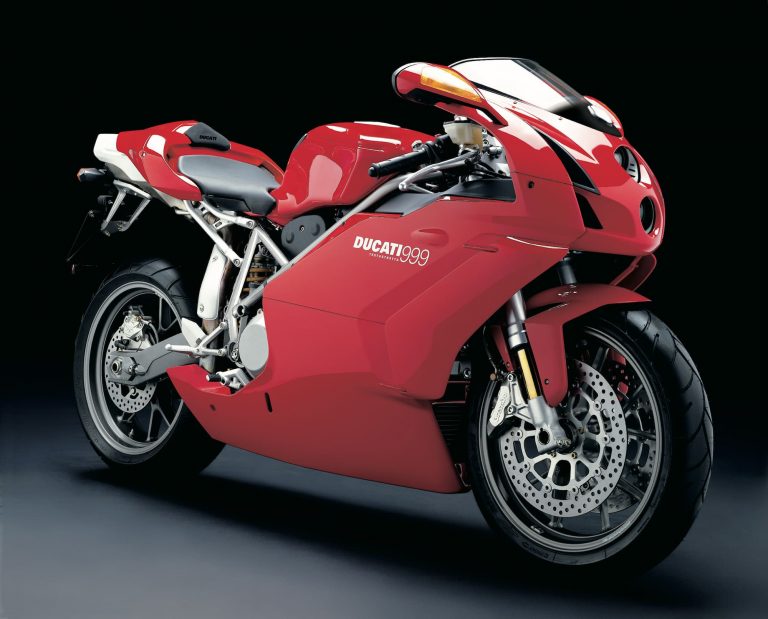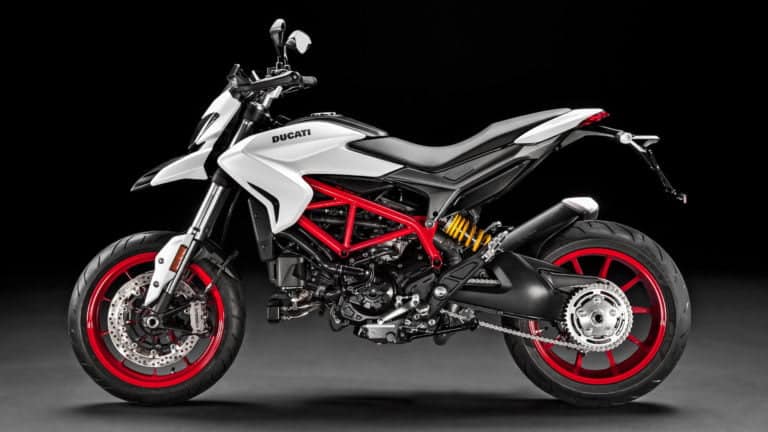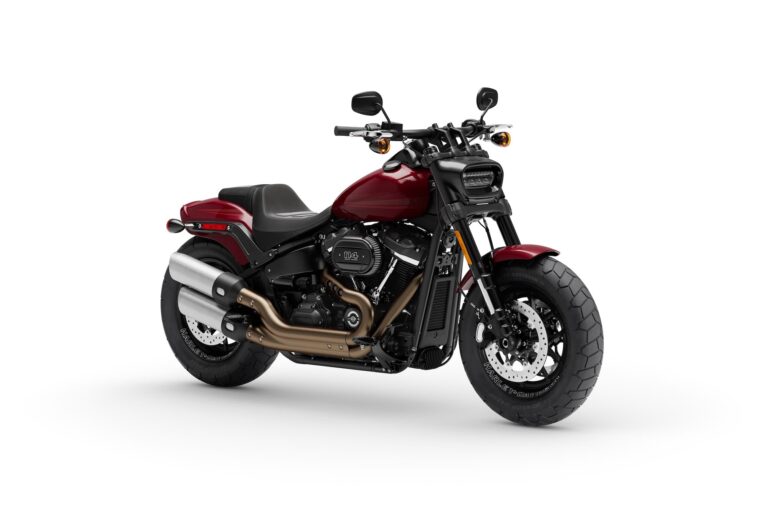Yamaha XJR1300 EFI (2007-2016) Maintenance Schedule
This is the maintenance schedule and service intervals for the Yamaha XJR1300 with a fuel-injected motor, made from 2007 and fundamentally unchanged (other than colours and some minor upgrades) through to its end in 2016 with the anniversary model.
The Yamaha XJR1300 is in a class of bikes no longer made — big, heavy, four-cylinder air/oil-cooled motorcycles.
In the latest generation, the Yamaha XJR1300 is powered by a 1251cc 16-valve inline four-cylinder engine. With its modest 9.7:1 compression ratio (in part because the engine is air/oil-cooled), the XJR1300 makes peak torque of 108 Nm (80 ft-lb) at 6000 rpm, and peak power of 77.3 kW (106 hp) at 8000 rpm.
Final drive is via a wet clutch, five speed transmission, and chain drive.
The XJR1300 is a real looker of a bike. Feast your eyes on a few photos. The Racer version, with drop bars and a cowl, looks fantastic, even though people complained it is a little awkward to ride (racer position but not as racy an engine as actual sport bikes).
The Yamaha XJR1300 had no direct successor, but in some ways the Yamaha MT-10 took its place.
This site has links for things like oil and spark plugs from which we earn a commission (which unfortunately nobody can save, not even us). If you appreciate this work, then please use those links. Thanks!
Yamaha XJR1300 Service Intervals
General maintenance intervals for the Yamaha XJR1300 are every 10000 km or 6000 miles, or annually. At every service, change the engine oil, and check or change the spark plugs.
The valve clearance interval for the XJR1300 is every 20000 km (half that for liquid-cooled Yamaha motorcycles). Of course, if you hear valve noise, it’s good cause to open it up earlier.
There’s no radiator coolant to change — hooray!
What you need to service your Yamaha XJR1300
If you need to service your Yamaha XJR1300, start off by getting some basic motorcycle maintenance tools.
Below are the other consumables and various items you’ll need for your XJR1300 (fuel injected).
| Part | Yamaha XJR1300 spec |
|---|---|
| Oil | Yamaha recommends Yamalube 10W-40 or Yamalube 10W-50 engine oil, or another of API service SG or higher, with JASO standard MA. |
| Oil filter | Use a HF401 air filter which is a drop-in replacement. |
| Air filter | The standard K&N air filter is a YA-1308. |
| Spark plug | The standard spark plug is an NGK DPR8EA-9 |
| Brake pads | You need two pairs of FA252HH for the front and one pair of FA088HH for the rear. |
| Brake fluid | Yamaha requires DOT 4 brake fluid. |
| Cable cleaner | Protect all cable life is a popular and cost-effective cable lube. |
| Chain maintenance | You need a good chain lube, or a Motul chain care kit. |
| General grease | Yamaha’s manual specifies both silicone grease and lithium soap-based grease. |
Maintenance schedule for the Yamaha XJR1300
Below is the maintenance schedule for the Yamaha XJR1300.
It’s adapted from the manual, but re-ordered and re-structured to be more intuitive.
| km x 1000 | 10 | 20 | 30 | 40 | 50 | |
|---|---|---|---|---|---|---|
| mi x 1000 | 6 | 12 | 18 | 24 | 30 | Every |
| Change engine oil (Motul 7100 10W-40). Check oil level and for oil leaks. | X | X | X | X | X | Year |
| Replace oil filter (HF401) | X | X | ||||
| Adjust fuel injection synchronization | X | X | X | X | X | Year |
| Check spark plugs, clean, and re-gap | X | X | X | |||
| Replace spark plugs (DPR8EA-9) | X | X | ||||
| Replace air filter (YA-1308) | X | Replace more often if riding in dust/rain | ||||
| Check and adjust valve clearance | X | X | ||||
| Change brake fluid (Castrol DOT 4) | 2 years | |||||
| Replace brake hoses | 4 years, or sooner if cracked/damaged | |||||
| Check front brake operation (including switches), fluid level, for fluid leakage. | X | X | X | X | X | Year |
| Check front brake pads, replace as needed (2 pairs EBC FA252HH) | X | X | X | X | X | |
| Check rear brake operation including switches), fluid level, and for fluid leakage. | X | X | X | X | X | Year |
| Check rear brake pads, replace as needed (EBC FA088HH) | X | X | X | X | X | |
| Check fuel line/hoses for cracks or damage | X | X | X | X | X | Year |
| Check muffler and exhaust pipe screw clamp(s) for looseness | X | X | X | X | X | |
| Check the air induction cut-off valve, reed valve, and hose for damage (replace as necessary) | X | X | X | X | X | Year |
| Check clutch operation, fluid level, and vehicle for fluid leakage. | X | X | X | X | X | |
| Check brake hoses for cracks or damage, and for correct routing and clamping | X | X | X | X | X | |
| Check wheels for runout and for damage | X | X | X | X | X | |
| Check tires for tread depth and for damage. Replace if necessary. | X | X | X | X | X | Year |
| Check wheel bearings for looseness or damage | X | X | X | X | X | |
| Check swingarm operation and for excessive play. | X | X | X | X | X | |
| Lubricate swingarm with lithium soap-based grease | X | |||||
| Check drive chain slack, alignment, and condition. Adjust and lubricate as necessary (Motul Chain Paste) | 1000 km / 600 mi, or after getting chain wet/dirty | |||||
| Check steering bearing play and steering for roughness | X | X | X | X | X | |
| Lubricate steering bearings (lithium soap-based grease) | X | X | ||||
| Check front fork operation and for oil leaks | X | X | X | X | X | |
| Check operation of shock absorbers and for oil leakage. | X | X | X | X | X | |
| Make sure that all chassis nuts, bolts and screws are properly tightened. | X | X | X | X | X | |
| Lubricate brake lever (silicone grease) | X | X | X | X | X | |
| Lubricate brake pedal, shift pedal, and clutch lever with lithium-soap-based grease | X | X | X | X | X | |
| Check sidestand operation, including of switch. Lubricate with lithium-soap-based grease. | X | X | X | X | X | |
| Lubricate moving parts and cables (lithium soap-based grease, and Protect all cable life for cables) | X | X | X | X | X | Year |
| Check and adjust throttle grip free play. Lubricate grip housing (Protect all cable life) | X | X | X | X | X | Year |
| Check lights, signals, switches, and horn operation. | X | X | X | X | X | Year |
| Adjust headlight beam. | X | X | X | X | X | Year |
Wheel and tyre sizes for the Yamaha XJR1300
Stock, the Yamaha XJR1300 shipped with Dunlop D252 tyres in its final years. These are street tyres with a lot of tread, and are a good choice for the XJR (unless you want to make it into a monster track bike!)
| Wheel | Tyre (Tire) size | Tyre (Tire) pressure (cold) |
|---|---|---|
| Front | 120/70 ZR17 M/C (58W) | 36 psi / 250 kPa / 2.5 bar |
| Rear | 180/55 ZR17 M/C (73W) | 42 psi / 290 kPa / 2.9 bar |
About the Yamaha XJR1300 (fuel injected)
They don’t make them like the XJR1300 any more — literally.
The Yamaha XJR1300 is a large-capacity, heavy standard bike, with an air/oil-cooled four-cylinder engine.
It’s a unique combination that gives a special riding experience. There’s a wave of torque down low, but it doesn’t rev so high that you need to scream it in the upper end of the rev range. Compared to a four-cylinder sport bike, you short-shift the XJR1300.
There were once a number of large-capacity air-cooled bikes. A commonly-cited competitor to the Yamaha XJR1300 was the Suzuki GSX1400, which had an even bigger engine.
But the Honda CB1100 was the last of the line of air-cooled big four-cylinder bikes. Emissions restrictions and the limitations of air/oil cooling (higher service costs, lower power) mean that their days were numbered.
The XJR1300 was updated a few times since its launch in 1998, but its 2007 model was the last of the line.
While the carburettors and exhaust were updated a few times, the 2007 model has fuel injection. Coupled with a change in camshaft timing, the fuel-injected XJR1300 actually is more responsive and has better low-down torque than its predecessors. A nice surprise!
The Yamaha XJR1300 had also previously had Öhlins shocks as an option, and then as standard — and this is carried over for the 2007+ model.
Front brakes are dual 298mm discs with four-piston callipers.
But maybe most importantly, the Yamaha XJR1300 is a very good-looking machine.
Being air/oil cooled, there’s no big radiator up front. So, Yamaha have taken pains to keep a very attractive, swooping four exhaust pipes. There’s an EXUP system which it’s worth looking into occasionally to make sure it is still working (checking the cable, greasing it as necessary).
Otherwise, maintaining the Yamaha XJR1300 is much like maintaining any other air/oil-cooled motorcycle from Yamaha. Valve service intervals are 20000 km — roughly half that of liquid-cooled motorcycles (like the FZ-1 for example).
But at least it’s a naked bike. Everything’s right there for you to get to!
References — Manual screenshots for the XJR1300.
The above maintenance schedule came from the 2013 manual for the Yamaha XJR1300. You can find the manual at Yamaha Europe.
